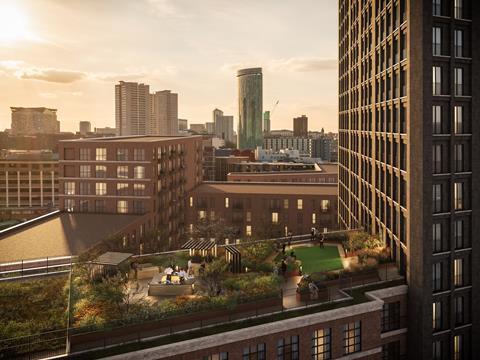Growth of build to rent sector now twice as fast in the regions as in London
The build-to-rent sector’s growth in the UK was slower in the first three months of this year compared to the same period in 2022, according to research released today.

From January to March the number of completed or pipeline homes in the sector grew by 9% from the first quarter of last year to 251,208 an increase of 21,666, according to study commissioned by business campaign group BusinessLDN, the British Property Federation (BPF), research consultancy Dataloft, and membership-body the UK Apartment Association, with research by Savills.
This was compared to a 19% rise equivalent to 27,691 units between quarter one of 2021 and 2022. The research looked at the total number of homes completed, under construction or planned, finding the 2023 first quarter figure was also down from the long-term annual growth of 28%.
But the analysis ‘Who Lives in Build-to-Rent?’ also found the rate of growth was slower in London compared to the regions.
The number of build-to-rent (BTR) homes completed, under construction of planned in the regions went up 12% (from 138,410 to 155,024) in the first quarter of this year, year-on-year, compared to 6% (91,132 to 96,184) in London.
Ian Fletcher, director of policy at the BPF, pointed out: “The sector can continue to help alleviate London’s undersupply of homes, but as the report shows, the growth of BTR in London is being outpaced by other regions at present.
“Developers in London face a number of unique challenges – such as a shortage of sites, the cost of land, and a squeezed energy grid. It is important the capital continues to provide housing solutions for all its residents because that is what makes a well-functioning city.”
The report’s authors said the figures highlighted “that a decrease in grant funding, increased construction costs and the need to address issues concerning building safety and retrofit are hampering the residential development industry’s ability to deliver the 66,000 new homes per year needed to house current and future Londoners”. Housebuilders have just been forced to sign a cladding pledge to fix safety defects on blocks over 11m where they have had some involvement over the past 30 years.
Stephanie Pollitt, programme director for housing at BusinessLDN, said: “The pace of construction between other parts of the country and the capital continues to widen for build-to-rent developments, which have a vital role to play in tackling the capital’s housing crisis. The need to accelerate the delivery of this accessible and high-quality accommodation is critical.”
>> See also Could build to rent become the darling of housing delivery?
But Guy Whittaker, associate at Savills, was positive about the figures, saying thepipeline was at an “all-time high” overall, despite the decreasing pace of growth, adding this was “no surprise” considering “four consecutive years of record-breaking investment”.
He said: “This growth looks set to continue: our recent survey of the European investment community found that by 2025, half of all investors - up from 37% today - expect over 25% of their assets under management to be allocated to the ‘living’ sector.” The living sector includes BTR, student housing, co-living, residential, senior living and affordable housing.
The report comes developers Apsley House Capital and Galliard Homes Limited announced that joint venture investors BlackRock Alternatives and rental residential management platform Outpost Management have forward funded a 628-home bespoke BTR development in Birmingham.
Lower Essex Square will be made up of three buildings and will include affordable housing. The JV between the housebuilders has committed to delivering 2,500 new homes in Birmingham in five years.










No comments yet